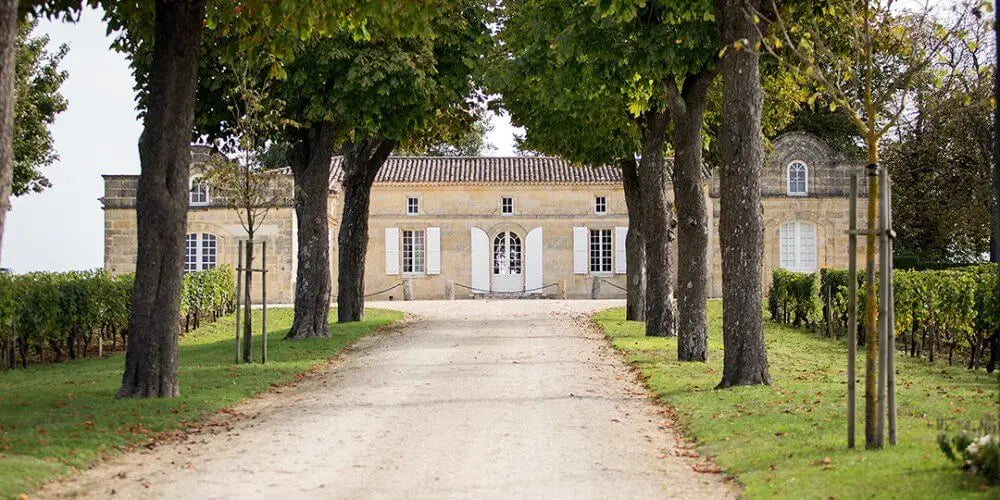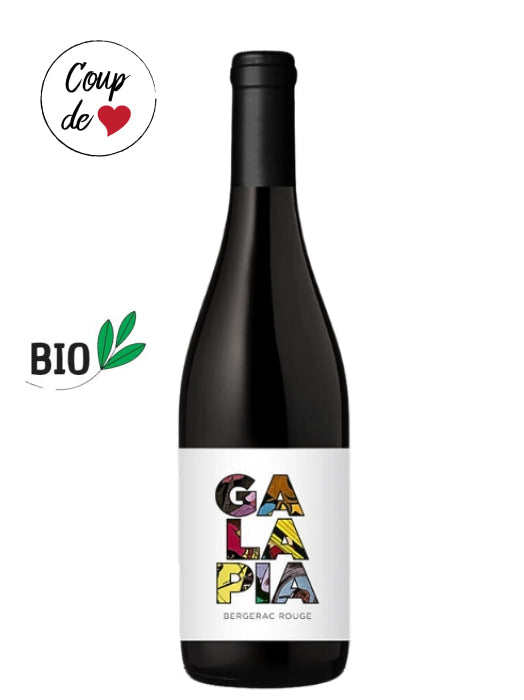Often overshadowed by Cabernet Sauvignon, Cabernet Franc nevertheless plays a crucial role in the world of wine. With more than 33,000 hectares, it is in fact the 7th most planted grape variety in France and is a key variety for many appellations.
Here, we invite you to discover all the characteristics of this fabulous grape variety: history, aromas, preferred appellations, and food and wine pairings—you will know everything about Cabernet Franc after reading this!
History and origins of Cabernet Franc
Although the exact origins of Cabernet Franc are difficult to establish with certainty, it is highly probable that it originated in the Spanish Pyrenees, where it was known as "Biturica". Written records from the Roman writer Pliny the Elder as well as the agronomist Columella also prove the presence of Cabernet Franc in the Bordeaux vineyards since the 1st century AD. Thus, it is the oldest red grape variety in Bordeaux!
In the following centuries, the variety then spread throughout the South-West, where it is believed to have been introduced by pilgrims returning from Santiago de Compostela during the 10th and 11th centuries.
It was also during this period that its presence was recorded in another region that still contributes to its fame today: the Loire Valley. Although the exact date of its arrival in the Loire is not known for certain, Cabernet Franc is said to have arrived by boat via the port of Nantes at a time when the Bretons maintained strong commercial alliances with the people of Bordeaux. This is also the reason why Cabernet Franc is locally called "breton"!
In the 16th century, it is notably mentioned in "Gargantua", the famous novel by Rabelais: "And by my beard, instead of one barrel, you shall have fifty kegs, I mean kegs of this good Breton wine which, by the way, does not come from Brittany, but from this fine land of Véron."

Gargantua by Rabelais loves "breton" (or Cabernet Franc)
In any case, Cabernet Franc has certainly held a prominent place in the wine world since the Middle Ages.
In the 18th century, Cabernet Franc was already a key grape variety in Bordeaux blends.
During the 19th and 20th centuries, Cabernet Franc continued to thrive, finding its place in international vineyards, notably in Italy (5,700 hectares), China (3,000 hectares), the United States (1,500 hectares), as well as in Australia, South Africa, and Chile. Today, it is appreciated not only for its ability to produce elegant single-varietal wines in monovarietal form, but also for its essential role in blends, where it brings balance and complexity.
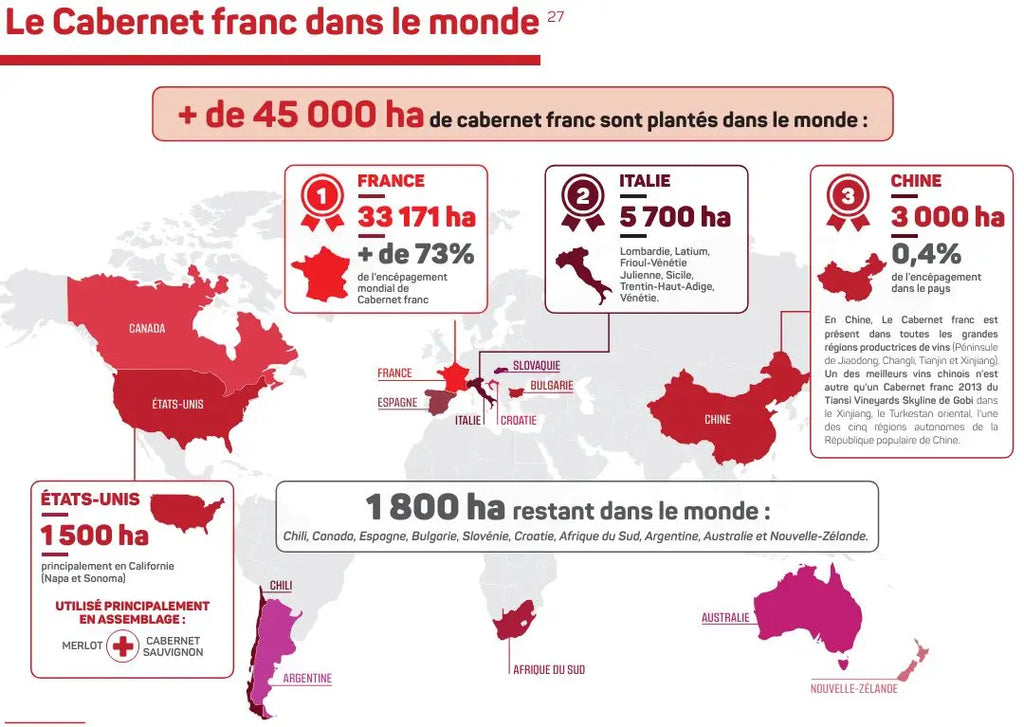
Where is Cabernet Franc grown?
Of the 45,000 hectares of Cabernet Franc planted worldwide, nearly 75% are in France (33,000 hectares).
With around 14,000 hectares, Bordeaux is the most important French region for the variety, on par with the Loire. In the Bordeaux vineyards, Cabernet Franc is mainly found on the right bank, in appellations such as Pomerol and Saint-Émilion where it is blended with two other grape varieties: Cabernet Sauvignon and Merlot. Other minor varieties may also complement the blends.
Cabernet Franc also shines in the Loire, where it covers about the same area as in Bordeaux (14,000 hectares). It is notably used in Anjou to produce delicious single-varietal red wines in appellations such as Chinon, Saumur-Champigny, Bourgueil and Saint-Nicolas-de-Bourgueil.
Finally, the wine region of South-West France also highlights Cabernet Franc in appellations such as Bergerac, Côtes-de-Bergerac, Pécharmant, as well as Gaillac and Irouléguy.
In the era of global warming and at a time when consumers are seeking lighter wines, Cabernet Franc has many advantages to continue developing around the world!
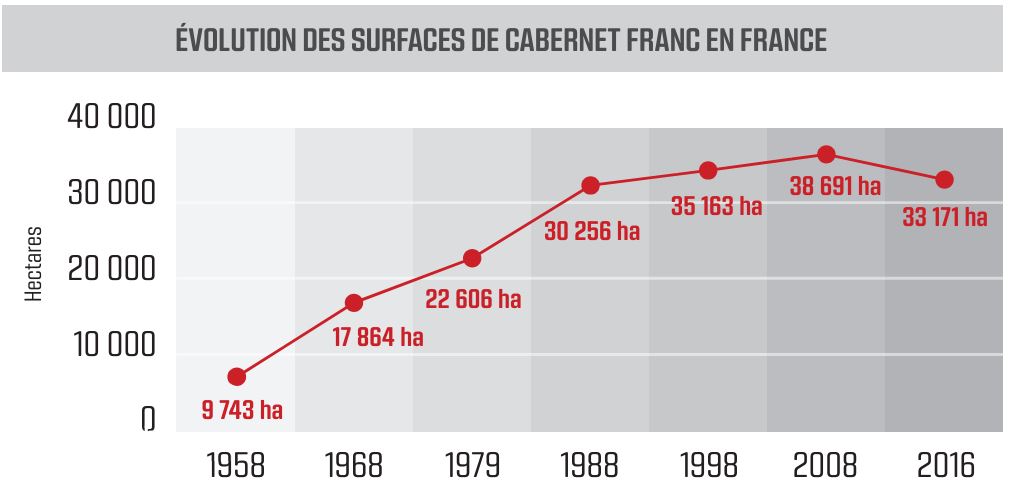
The characteristics of Cabernet Franc
In the vineyard, Cabernet Franc is a vigorous grape variety that adapts well to different soils. Nevertheless, it is particularly fond of limestone and well-drained soils. It is less demanding than Cabernet Sauvignon in terms of heat and is therefore suited to cooler climates. It is also less vulnerable to spring frosts thanks to its later budding compared to other varieties.
When tasted, Cabernet Franc can offer different profiles depending on its region of origin, the soils in which it grows, and its vinification.
From an aromatic point of view, it often presents aromas of red or black fruits ranging from strawberry to cherry, as well as blackberry and blackcurrant. Some vegetal notes (bell pepper, eucalyptus) may also appear when it comes from a cool terroir or vintage. With age, more complex aromas of tobacco, undergrowth, and leather emerge.
The tannic potential of Cabernet Franc is rather high. Thus, it can offer tannic and intense cuvées, but also fine and silky wines: it all depends on the winemaker's approach and the type of wine they wish to produce.
The acidity of Cabernet Franc is rather high, contributing to the freshness of the wines as well as their liveliness on the palate.
Finally, wines made from Cabernet Franc can have magnificent aging potential, as demonstrated by several Bordeaux and Loire cuvées. Nevertheless, it is also a grape variety capable of producing delicious aperitif wines that can be enjoyed simply and for pure indulgentpleasure.

The aromas of Cabernet Franc
What are the differences between Cabernet Franc and Cabernet Sauvignon?
Cabernet Franc and Cabernet Sauvignon are often confused, the greater notoriety of the latter overshadowing the former.
However, Cabernet Franc is older than Cabernet Sauvignon. In fact, we can go further: Cabernet Franc is simply the father of Cabernet Sauvignon! Yes, the latter is the result of an accidental cross in the 17th century between Sauvignon Blanc and...Cabernet Franc.
Nevertheless, although the two grape varieties share a genetic relationship, several differences set them apart.
First of all, Cabernet Sauvignon is a grape variety that prefers warm climates and gravelly soils that retain heat. Conversely, as seen earlier, Cabernet Franc thrives better in cooler climates and on drained limestone soils.
From an aromatic perspective, Cabernet Sauvignon develops riper, more intense black fruit aromas than Cabernet Franc: plum, blackberry, or cherry can be found in both varieties but more regularly in the former. Cabernet Sauvignon also tends to exhibit more peppery notes.
Finally, wines made from Cabernet Sauvignon are more tannic and have higher acidity than those made solely from Cabernet Franc.
Thus, if the two varieties are often blended in Bordeaux or the South-West, it is above all because their respective qualities balance and complement each other ideally.
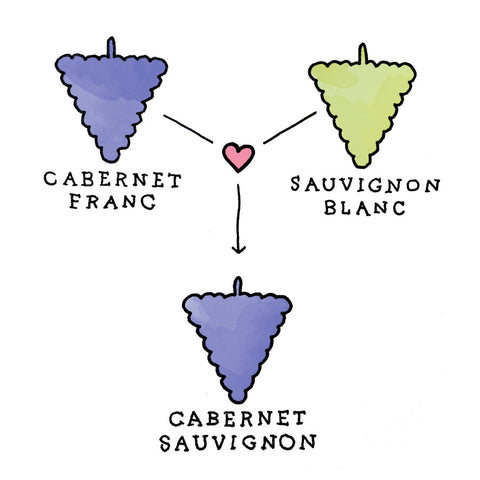
Cabernet Franc and Sauvignon Blanc are the parents of Cabernet Sauvignon!
How to pair Cabernet Franc at the table?
With its beautiful acidity, distinctive aromatics, and rather robust tannins, Cabernet Franc is a grape variety that offers great possibilities for meals or aperitifs. Let’s take a look at the options!
- Red meats : the fruitiness and tannic structure of Cabernet Franc perfectly balance the rich, smoky flavors of grilled meats. Thus, a Cabernet from the South-West or Bordeaux will be ideal with a rib steak, entrecôte, or grilled meats!
- White meats : a moderately tannic and fruity Cabernet will pair divinely with a Sunday roast chicken or pork tenderloin!
- Cheeses : although white wines pair better with cheese, a young, low-tannin, fruity Cabernet Franc can go well with Brie or Camembert. Comté and Gruyère are also good options.
- Charcuterie : once again, a fruity, low-tannin Cabernet Franc will be a hit with a charcuterie platter. Dry sausage, pork rillettes, pâtés...anything goes!
To fully appreciate a Cabernet Franc, it is also essential to pay attention to its serving temperature. A young wine focused on freshness and indulgentpleasure can be served around 14-16°C. If, on the other hand, you have denser and more robust Cabernets like those from Bordeaux, it is preferable to serve them around 16-18°C. Finally, do not hesitate to decant young wines to reveal their aromas!
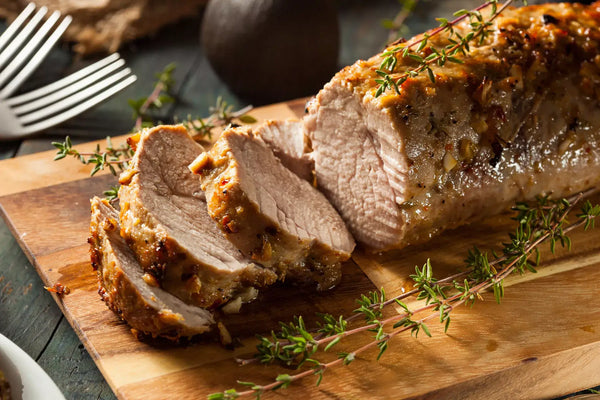
Pork tenderloin and Cabernet Franc: a delicious pairing!
The best Cabernet Francs
In France, the best Cabernet Francs are undoubtedly found in the Loire and Bordeaux.
We recommend, for example, the delicious red wines from Domaine Fabrice Gasnier, an absolute reference for AOC Chinon. Likewise, the Clos des Quarterons from the Amirault family offers wonderful single-plot cuvées for aging. Finally, still in the Loire, Domaine Lamé Delisle Boucard delights us with its pure fruit and pleasure cuvée "Déchaînée".
In Bordeaux, many wines contain Cabernet Franc, but few estates have it as the majority. Beyond the famous Château Cheval Blanc, we also recommend the Premier Grand Cru Classé Château Trotte Vieille in the Saint-Émilion AOC...a delight of complexity!
You are now an expert on Cabernet Franc; all that remains is to open a good bottle and put your new knowledge into practice! Cheers, and remember, La Cave Éclairée is always at your disposal if you need advice!
